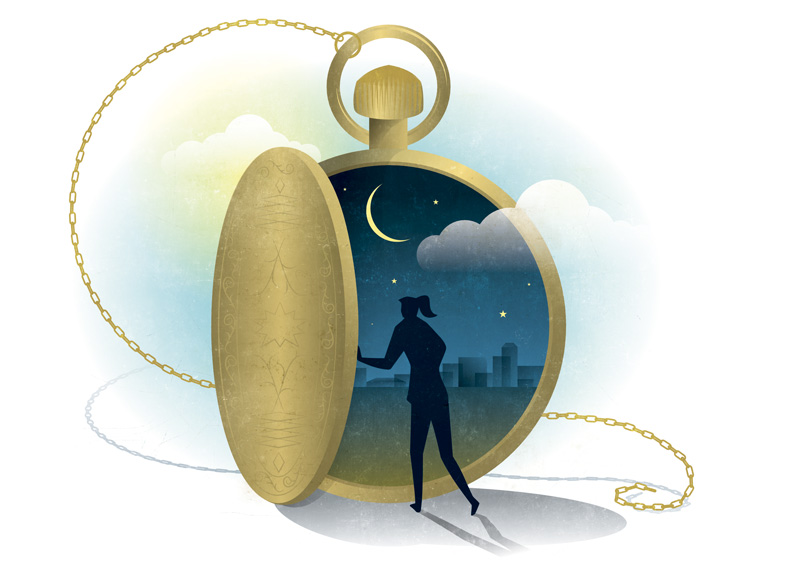
What historical event would you like to have witnessed and why?
On January 1, 1863, President Abraham Lincoln hosted the annual New Year’s Day reception at the White House, spending several hours shaking hands with hundreds of citizens. In the early afternoon, he returned to his office to sign the Emancipation Proclamation. As he prepared to sign, he worried that his arm, stiff and numb from shaking hands, would tremble, prompting people to wonder whether he had any hesitation. However, Lincoln was recorded saying: “I never in my life felt more certain that I was doing right than I do in signing this paper.” Then, with the strike of a pen, he declared “that all persons held as slaves . . . shall be thenceforward and forever free.”
Although the Emancipation Proclamation was part of a military strategy and did not immediately eliminate slavery in the United States, it fundamentally altered the character of the Civil War, transforming it from a sectional conflict into a war for freedom and abolition. Lincoln’s views on slavery had evolved throughout his life, and he spent many months considering the proclamation and discussing it before signing. I would like to have witnessed Lincoln grapple with the moral obligations to his country and to himself, knowing that as president he was harnessing the power of that moment and setting the stage for generations to come.
Lina Mann, CAS/MA ’19, is a historian at the White House Historical Association.
Several events come to mind: the 1963 March on Washington, any of Malcolm X’s speeches, the 1965 Delano Grape Boycotts, or Lolita Lebrón’s decolonial uprising in Congress in 1954. If I had to choose only one, however, I’d pick the 1868 Grito de Lares uprising led by Ramón Emeterio Betances and Segundo Ruiz Belvis in Puerto Rico.
El Grito was crucial for several reasons: it entwined calls for the decolonization of Puerto Rico with the abolition of slavery on the island; it established a resistant political tradition among Puerto Ricans as a central aspect of our national character; and it initiated a multiracial and multiclass coalition. Essentially, it laid the groundwork for imagining Puerto Rico as a multiethnic nation, distinct from US and Spanish empires.
Although the promise of El Grito has been short-circuited by the ongoing colonization of the island and the endemic class and racial distinctions that plague the Caribbean, this was a historical moment where Puerto Ricans imagined otherwise.
Professor David Vazquez is director of AU’s Latina/o/x studies program.
I would have loved to have witnessed the building of the great Gothic cathedrals of Europe in the Middle Ages. Historians still do not fully understand the engineering skills required to construct the ribbed vaults, domes, and flying buttresses that made these buildings the tallest ever attempted, and indeed, sometimes structures collapsed, injuring or killing their makers.
Ordinary laypeople made arduous pilgrimages to cathedrals, where colorful stained glass, polychromed sculpture, wall paintings, and textiles engaged the viewer while perfumed incense and choral chant excited the senses. The religious experience culminated in venerating the jewel-encrusted shrine containing bodily relics of a much-loved saint that had the power to perform miracles. Many of these powerful visual images are lost; shrines, for example, were frequently melted down during the English Reformation and the French Revolution. What an amazing sight it would have been to witness these beautiful spaces when they were first created.
Joanne Allen is a professorial lecturer in the Department of Art.
My research explores linkages between the history of race and money in eighteenth- and nineteenth-century America. One event that I would like to have witnessed was a gathering at Faneuil Hall, the heart of Boston’s civic life, on August 1, 1890. Hundreds of people signed petitions and listened to speakers supporting the Federal Elections Bill, which stipulated that US elections be administered by the federal government, not the states. The legislation would also have enforced the ability of Southern Blacks to vote, as guaranteed by the Fifteenth Amendment.
Despite the energy and excitement of that day, the bill was rejected by the Republican Senate after passing the House by just six votes. It was ultimately sidelined by the Free Silver movement (1873–1896), a decades-long effort by millions of farmers and labor organizations to avoid indebtedness and economic ruin—both of which had become common in agrarian life—by increasing access to tangible money. Instead of the elections bill, the Senate passed legislation that required the Treasury department to purchase a certain quantity of silver annually to strike more dollars, quarters, dimes, and other coins.
Witnessing the roar of excitement at Faneuil Hall over the prospect of advancing civil rights would have given a face and a voice to the indispensable history of race and money in America.
Jonah Estess is a doctoral candidate in the Department of History.